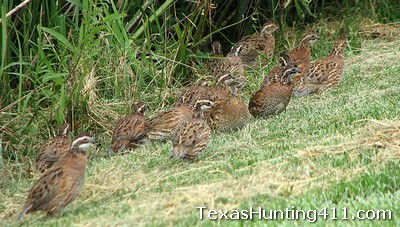Bobwhite quail are the most numerous quail found in the Lone Star State. Furthermore, quail hunting in Texas is socially and economically important. But viable quail populations require suitable habitat. According to the National Bobwhite Conservation Initiative, a coalition of wildlife professionals across 25 states, bobwhite quail populations have plummeted nationwide by as much as 80 percent over the past half century by some estimates.
In addition, entire suites of songbirds that depend on the same “quail habitat” of native grasslands and shrublands have recorded similar declines. The good news for quail hunters is that history has shown bobwhites can bounce back when the weather cooperates and suitable habitat is available. Ideal quail production occurs in years that remain wet and cool during the spring and early summer months because it extends the window of opportunity for nesting and reproduction.

“We need to manage quail habitat in preparation for those good years,” said Robert Perez of Texas Parks and Wildlife Department. “A majority of bobwhites don’t survive the first year even during good times; that’s why it takes more than one good year to bring numbers back. Quail hunting is not typically a limiting factor in areas with good habitat.”
Texas is taking a proactive, partnership strategy to address quail population declines in Texas through a coalition of state, federal and private stakeholders — the Texas Quail Conservation Initiative. By bringing all stakeholders to the table, the initiative can focus on landscape level conservation. Habitat management is the key to producing and maintaining quail habitat and providing quality quail hunting year after year. Without the required habitat, even good years will not be productive for quail populations.